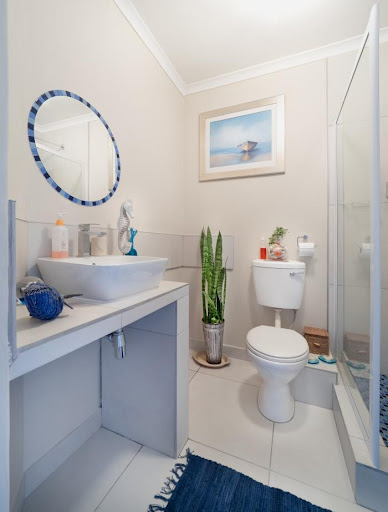Nothing completes a bathroom renovation like the perfect tile. After picking your favorite style and finish, it’s important to consider the right size for your space as well. Whether you’re upgrading a small powder room or remodeling an entire master bath, here are some tips you should consider:

Use large tiles for walls
Large-format tiles (greater than 12 inches) placed horizontally on walls tend to make a space feel bigger because there are fewer lines to break up the surface visually. Even with some patterned tile, such as marble, you can still accomplish this feeling if the pattern runs horizontally. And choosing lighter-colored tiles can increase the effect, as they reflect more light.
Especially in a small shower, a larger white tile can make it feel less cramped. (Though if you’re tiling a closet-sized shower, a medium-size tile, such as 4 x 8 and 6 x 8, could work better.) Source: Hunker
Consider small tiles for floors
For shower floors or pans, generally you will want to have smaller sized tiles, from 4 inches by 4 inches down to 1-inch by 1-inch mosaic tiles. The idea is that you need to have tiles small enough so that the tile installer, while laying the mortar bed, can form gentle contours. These contours will allow the flooring to pitch correctly so the water will properly move toward a centrally located drain.
Smaller size tiles also work better for shower flooring because they create better grip opportunities for bare feet. Smaller tiles mean that the installer must include more seams between the tiles and thus a greater amount of grout laid between those tiles. Grout lines can provide much-needed friction when your feet are moving around on wet flooring. Source: TheSpruce
Additional tip to remember
Why invest in so much tile as part of the waste factor? Remember: Running out of materials on any job can be very frustrating. Having to stop mid-job to regroup is bad enough, but—in an even worse case scenario—you might find that the store is out of your particular tiles. Ordering tiles 15 to 20 percent more than you expect to use will help ensure against miscalculations, breakages, and cutting odd sizes to fit the space. It’s also a good idea to have spare tiles in reserve should any tiles become cracked or damaged in the future. Check to see if your retailer will allow refunds for unused tiles or unopened boxes, or start dreaming up projects to make with the spares. Source: BobVila
If you’re planning to replace your tiles because they’re already chipped and worn out, we can help. Call us!


